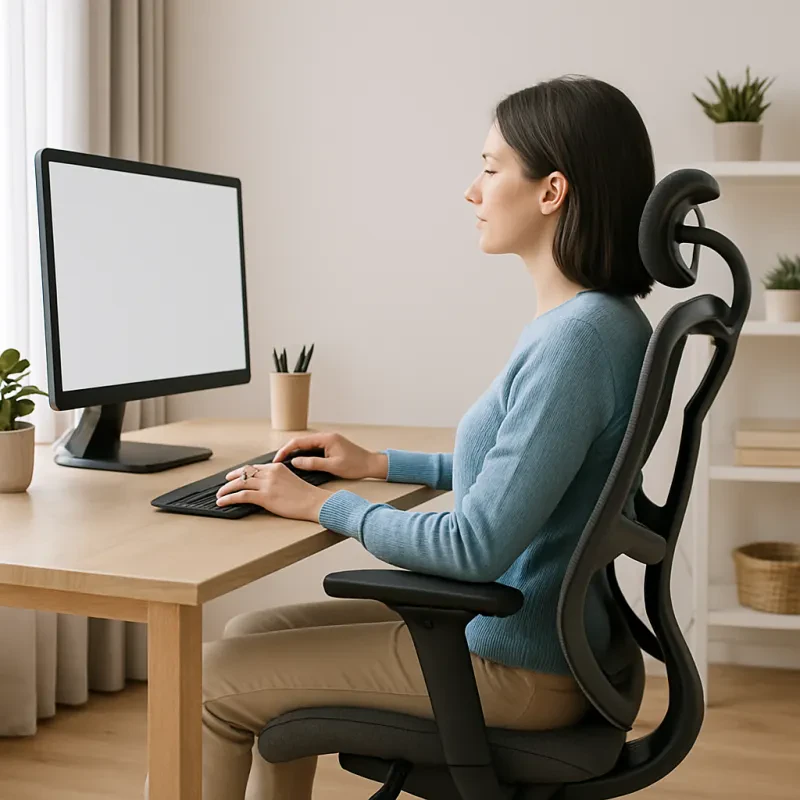The concept of ergonomic design and chairs can be traced back to the ancient Greeks, who were known for their emphasis on physical well-being and posture. It wasn't until the Industrial Revolution, however, that the need for more comfortable seating arrangements became more prevalent. Workers spending long hours in factories and offices needed a solution to prevent back pain and other musculoskeletal issues.
In the 1970s, ergonomic chairs started to gain popularity as more research was done on the negative effects of poor posture and prolonged sitting. Designers began to incorporate adjustable features such as lumbar support, armrests, and seat height into their chair designs to promote better posture and comfort for users. These new features helped prevent strain on the body and encouraged a more natural sitting position.
Today, ergonomic chairs come in a variety of shapes and styles, each catering to different needs and preferences. From kneeling chairs to ball chairs, the options are endless. Companies are constantly innovating and pushing the boundaries of ergonomic design to create chairs that not only support the body but also promote health and well-being in the workplace. The journey of the ergonomic chair from its humble beginnings to its modern-day form is a testament to the importance of comfort and functionality in our everyday lives.
Evolution of ergonomic features
Early ergonomic chairs were characterized by simple adjustments such as seat height and backrest tilt. These features aimed to provide a more comfortable and supportive seating experience, especially for office workers who spent long hours at a desk. As the demand for ergonomic solutions grew, designers began incorporating advanced mechanisms like lumbar support, armrest adjustments, and seat depth control into their chair designs.
By the 2000s, ergonomic chairs had become a staple in offices and homes worldwide. The emphasis shifted towards creating chairs that promote good posture, reduce discomfort, and prevent musculoskeletal disorders. Today, modern ergonomic chairs come equipped with a plethora of features such as breathable mesh material, headrests, and synchronized reclining mechanisms, to provide ultimate comfort and support for users of all shapes and sizes.
Benefits of using ergonomic chairs
Another benefit of ergonomic chairs is their adjustability. Most ergonomic chairs come with a variety of adjustable features such as seat height, armrest height, and lumbar support, allowing users to customize the chair to fit their unique needs and preferences. This not only enhances comfort but also promotes better overall health by reducing strain on the body.
In addition to physical benefits, ergonomic chairs can also improve productivity and focus. By providing a comfortable and supportive workspace, ergonomic chairs help to reduce fatigue and discomfort, allowing users to stay focused and productive for longer periods of time. This can lead to increased efficiency and performance in both the workplace and home office settings.
Modern trends in ergonomic chair design
In recent years, there has been a shift towards creating more visually appealing ergonomic chairs that blend seamlessly into modern work environments. Designers are focusing on sleek and minimalist styles that prioritize both comfort and aesthetics. Many of these chairs feature ergonomic features such as adjustable lumbar support, headrests, and armrests to provide maximum comfort for users.
One popular trend in modern ergonomic chair design is the use of environmentally friendly materials. Manufacturers are opting for sustainable materials such as recycled plastic, bamboo, and eco-friendly fabrics to reduce their carbon footprint. These chairs not only help users feel comfortable and supported, but also contribute to a cleaner and greener planet.
Another key trend in ergonomic chair design is the incorporation of innovative technologies. Some chairs now come equipped with features such as built-in massage functions, adjustable temperature control, and even air purification systems. These chairs aim to enhance the overall well-being of users by providing a more holistic approach to ergonomic design.
Overall, modern ergonomic chair design is moving towards a more holistic approach that considers not only the physical comfort of users, but also their mental well-being and the impact on the environment. By combining stylish aesthetics, sustainable materials, and innovative technologies, manufacturers are creating ergonomic chairs that cater to the needs of the modern workforce.


